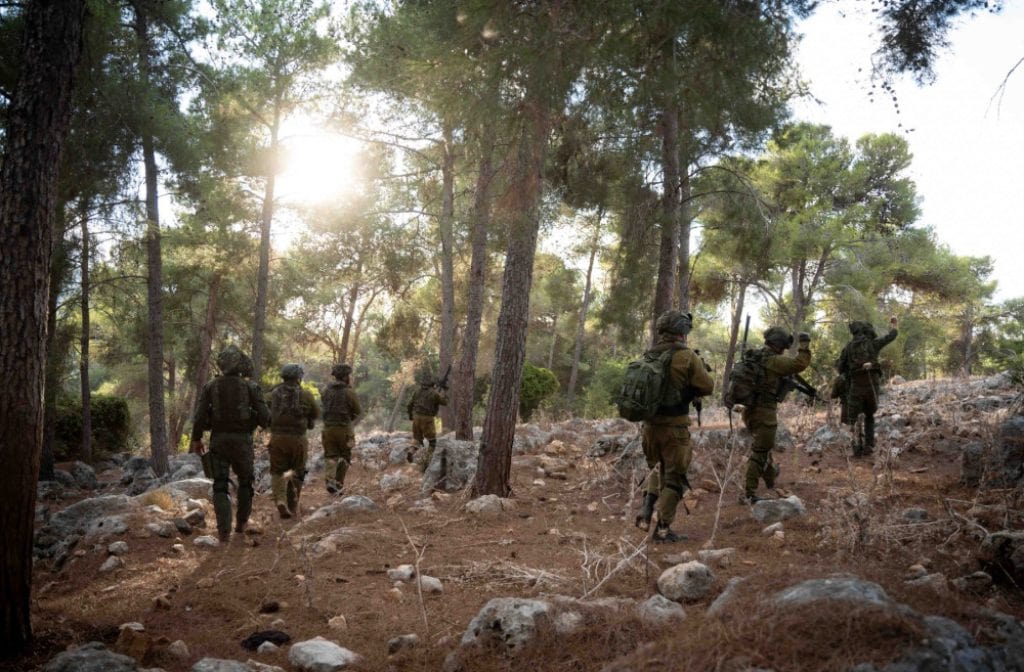
The Israel Defense Forces (IDF) 11th Reserve Brigade completed a brigade-level exercise in northern Israel as it continues to prepare troops for a possible escalation with Hezbollah. The IDF has also stationed several divisions in the north over the previous 11 months.
The training took place during a week of escalation in which Hezbollah fired barrages of rockets at northern Israel. In addition, IDF Chief of Staff Lieutenant General Herzi HaLevi visited the area and conducted a situational assessment with the 210th Division, which is responsible for the Golan Heights.
Halevi met with the IDF’s Northern Command chief, Major General Ori Gordin, and the commander of the 210th Division, Brigadier General Yair Peli. The 210th Division has been a target of Hezbollah in recent months as the group has increased its attacks on IDF posts in the Golan. There are many IDF facilities and bases in the area, and Hezbollah shifted its focus to striking them in June and July.
In July, a Falaq rocket fired by Hezbollah hit a soccer field in the Druze town of Majdal Shams in the Golan, killing 12 children and teenagers. The IDF retaliated for that attack by killing a Hezbollah commander in Beirut. Hezbollah then claimed to retaliate in late August by launching hundreds of rockets at Israel.
This cycle of escalation and retaliation has become the norm. However, in the first week of September, Hezbollah again escalated with large rocket barrages, firing up to 100 projectiles in a day at Israel. The latest round of attacks came on September 8, just after Halevi visited the north on September 6.
“The IDF is very focused on combat with Hezbollah. I think that the number of strikes in the past month, operatives eliminated, rockets and infrastructure destroyed, is very high. The Northern Command, with all of the IDF’s capabilities, is striking a lot of Hezbollah’s capabilities in Lebanon before they can attack us, and at the same time, we are preparing for offensive moves within the arena,” Halevi said. “I think that this combination of very significant strikes on Hezbollah to reduce the threats to the residents in the north, including in the Golan Heights, is very, very significant together with readiness for an offensive going forward that we are very engaged in.”
The IDF chief of staff’s comments contrast with Hezbollah’s attempts to show that its threats remain potent. On September 8, the group fired numerous rockets at the northern Israeli city of Kiryat Shmona, which has largely been a ghost town since it was evacuated in October 2023. Hezbollah issued statements about the attacks, which took place between two and six in the morning, prior to sunrise. Iranian state IRNA media characterized the barrages as Hezbollah launching so many rockets that they “rain” down on northern Israel.
During the drill by the 11th Brigade, also known as the Yiftach Brigade, units operated in mountainous and forested terrain similar what they would face in southern Lebanon. The IDF emphasized that they maneuvered in “thicketed terrain, advancing along a mountainous route” and practiced evacuating wounded. The 11th previously operated in Gaza in December and January.
On September 7, Hezbollah launched around 30 rockets at 6:04 am, targeting an area near Mattat in northern Galilee. Later in the day, the group fired another 10 rockets at Israeli communities near the border and launched drone attacks in the evening. Hezbollah increasingly relied on drone attacks between April and June. However, it has shifted to more rockets over the last month. From September 6 to 8, the IDF struck sites used by Hezbollah in Aitaroun, Odaisseh, Naqoura, Abou Chach, Tayr Harfa, Maroun El Ras, Yaroun, Rihan, and Beit Lif, according to the Israeli military.
Hezbollah claimed its increased attacks on September 8 were due to an IDF strike near the small village of Froun in southern Lebanon. Reports indicate that Lebanese emergency responders were killed. However, the IDF said it “struck and eliminated terrorists from the Amal terrorist organization that operated within a Hezbollah military structure in the area of Froun in southern Lebanon.”







